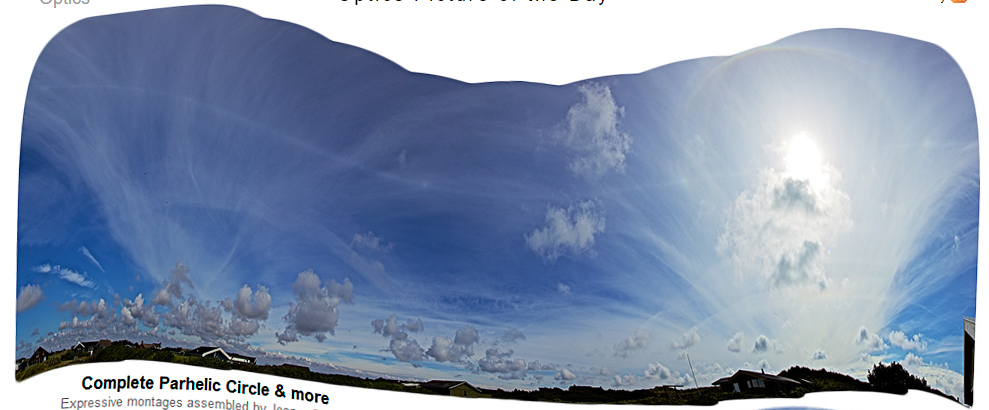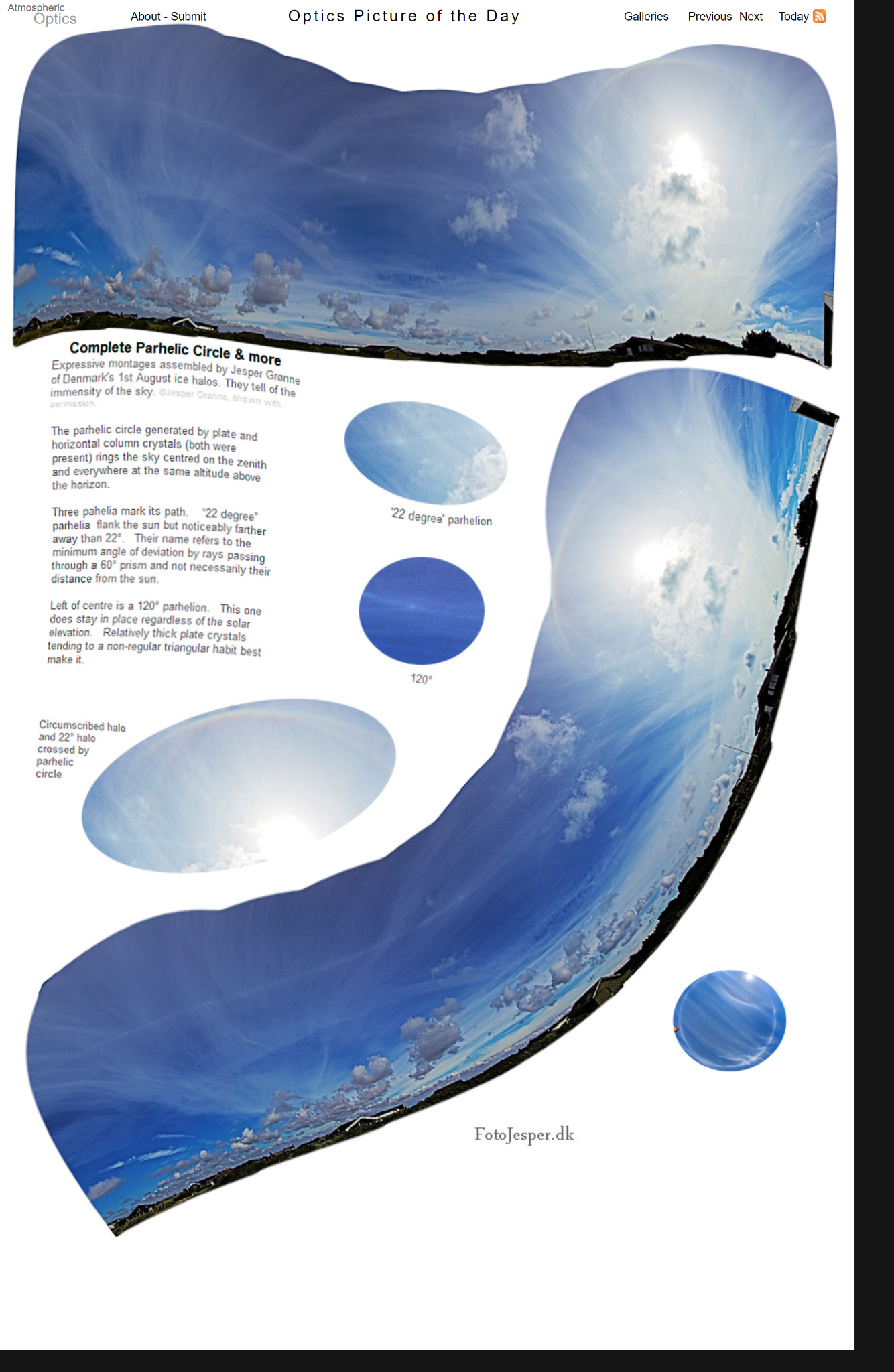1st August Halos
Exploring the Enigmatic 1st August Halos
On the 1st of August, the sky unveiled a breathtaking display of atmospheric optics phenomena known as halos. These mesmerizing patterns were captured in expressive montages assembled by Jesper Grønne from Denmark, showcasing the immensity and beauty of the celestial expanse.
One of the remarkable features observed during this event was the complete parhelic circle. Formed by plate and horizontal column crystals, this celestial phenomenon encircled the sky, centered on the zenith, and maintained the same altitude above the horizon throughout its path. The parhelic circle was visible thanks to the presence of both types of crystals, which interacted with sunlight to create this ethereal spectacle.
The parhelic circle was accompanied by three distinct parhelia. Known as "22-degree" parhelia, these phenomena appeared on either side of the sun, albeit noticeably farther away than 22 degrees. The name "22-degree" is derived from the minimum angle of deviation that rays passing through a 60° prism experience. It is important to note that the term refers to the angle of deviation and not necessarily the distance between the parhelia and the sun.
Among the captivating images captured by Jesper Grønne, one particular parhelion caught attention. Situated to the left of the center, this 120-degree parhelion maintained its position regardless of the sun's elevation. Its formation was attributed to relatively thick plate crystals, which exhibited a non-regular triangular habit. These specific crystal structures were found to be most conducive to creating this distinctive parhelion.
The 1st August halos demonstrate the incredible complexity and diversity of atmospheric optics phenomena. By studying these enchanting displays, scientists and enthusiasts gain a deeper understanding of light interaction with atmospheric particles, leading to further insights into the physics and intricacies of our atmosphere.
The captivating images captured by Jesper Grønne serve as a reminder of the vastness and beauty that lies above us. They inspire us to look up and appreciate the wonders of the natural world, even in the seemingly ordinary moments of our lives.
As we continue to explore and document atmospheric optics phenomena, we uncover new layers of understanding about our planet's atmosphere. Each observation contributes to our knowledge and appreciation of the intricacies and complexities of the world we inhabit.
The 1st August halos provide a glimpse into the magical interplay between light and particles in our atmosphere. By immersing ourselves in the study of these phenomena, we unravel the mysteries of the skies and gain a deeper appreciation for the awe-inspiring wonders that surround us.

Complete Parhelic Circle & more
Expressive montages assembled by Jesper Grønne of Denmark's 1st August ice halos. They tell of the immensity of the sky. Jesper Grenne, shown with permission.
The parhelic circle generated by plate and horizontal column crystals (both were present) rings the sky centred on the zenith and everywhere at the same altitude above the horizon.
Three pahelia mark its path. "22 degree" parhelia flank the sun but noticeably farther away than 22. Their name refers to the minimum angle of deviation by rays passing through a 60° prism and not necessarily their distance from the sun.
Left of centre is a 120° parhelion. This one does stay in place regardless of the solar
elevation. Relatively thick plate crystals tending to a non-regular triangular habit best
make it.

Note: this article has been automatically converted from the old site and may not appear as intended. You can find the original article here.
Reference Atmospheric Optics
If you use any of the definitions, information, or data presented on Atmospheric Optics, please copy the link or reference below to properly credit us as the reference source. Thank you!
-
<a href="https://atoptics.co.uk/blog/1st-august-halos/">1st August Halos</a>
-
"1st August Halos". Atmospheric Optics. Accessed on November 26, 2024. https://atoptics.co.uk/blog/1st-august-halos/.
-
"1st August Halos". Atmospheric Optics, https://atoptics.co.uk/blog/1st-august-halos/. Accessed 26 November, 2024
-
1st August Halos. Atmospheric Optics. Retrieved from https://atoptics.co.uk/blog/1st-august-halos/.